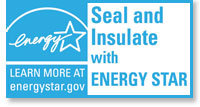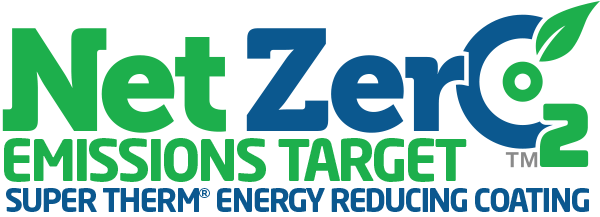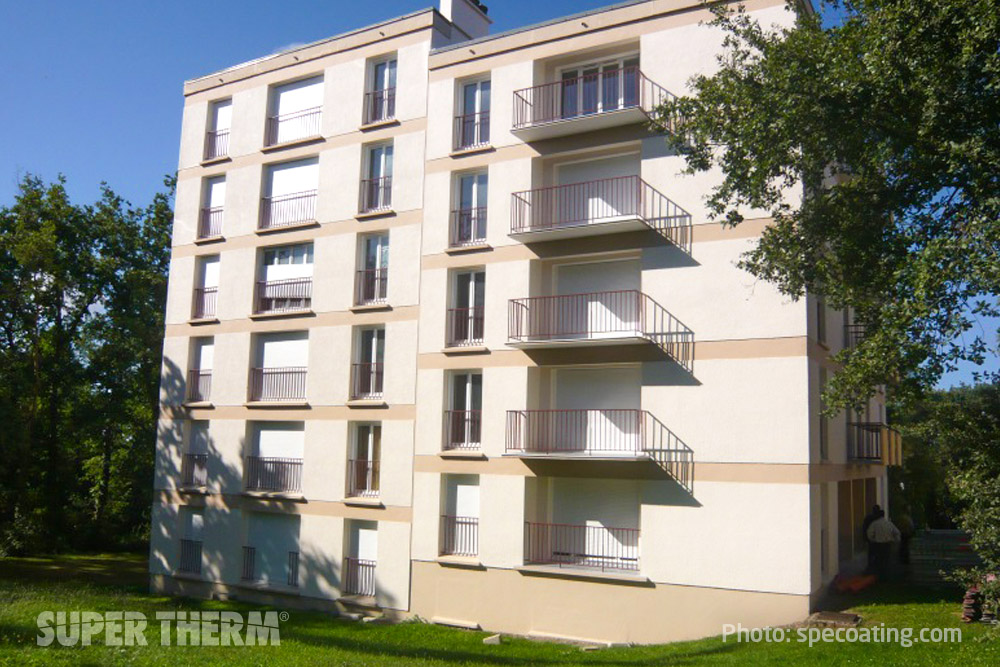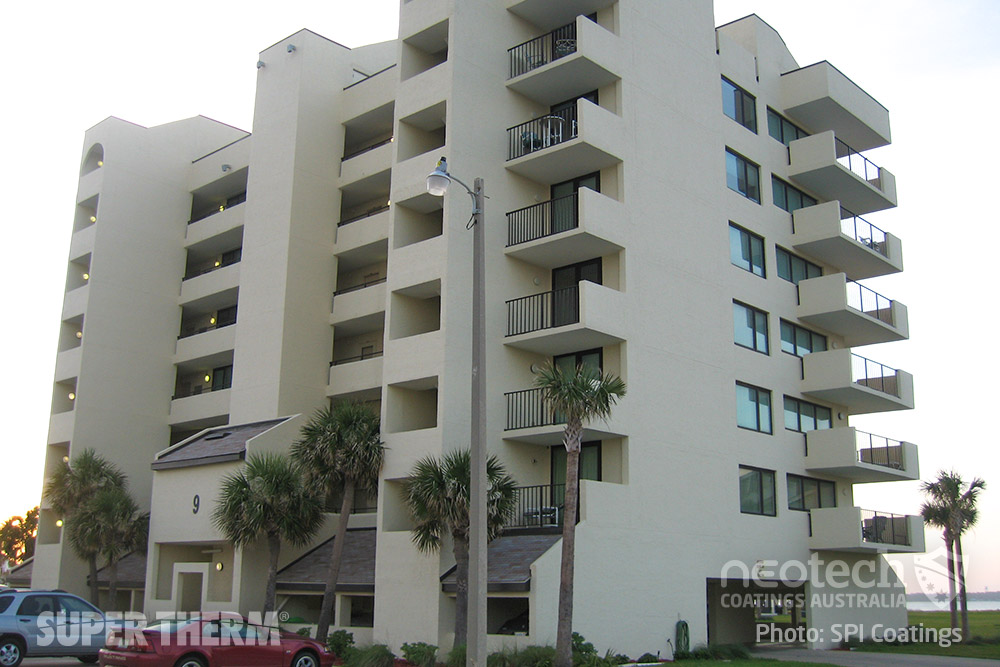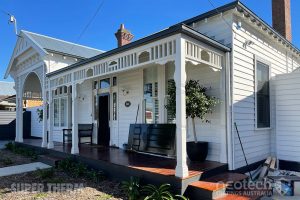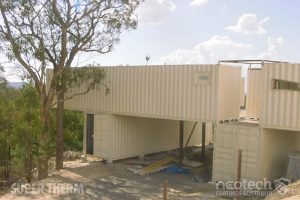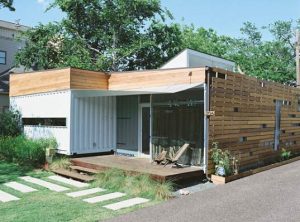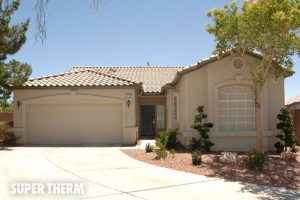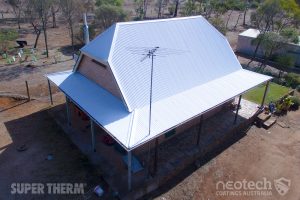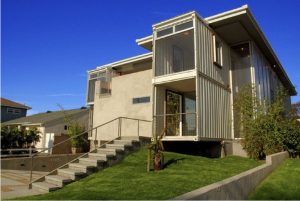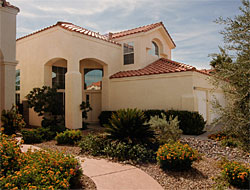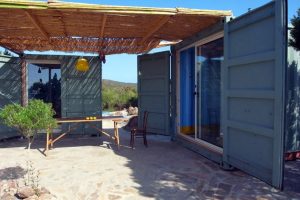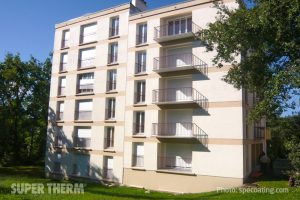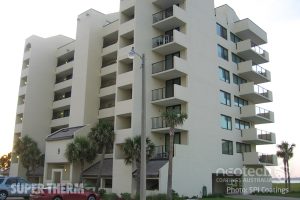Architecture
Australia has a range of Building Code Standards, however Architects could really develop further opportunities with sustainability and protection with the enhancement their designs using NEOtech Coatings solutions.
Ceramic coatings applied to metal, concrete, wood or other substrates where a reduction in thermal transmission is required. Surface coating applied to substrates in fabrication shop before shipment to site, or applied on site in an approved environment during application and curing.
Environmental benefits of Net Zero Emissions Target Coating
Super Therm® is truly a timely, Energy Star and environmentally-friendly solar heat block coating that addresses both stopping heat and fire protection with minimal effort in application labor, making it ideal for a wider market use. The EPA (Environmental Protection Agency – USA) has recognised the environmental benefits of Super Therm® for reducing energy consumption and resulting pollution from energy consumption. It also creates a net benefit for the reduction of the Urban Heat Island effect.
Thermal solar absorption for materials
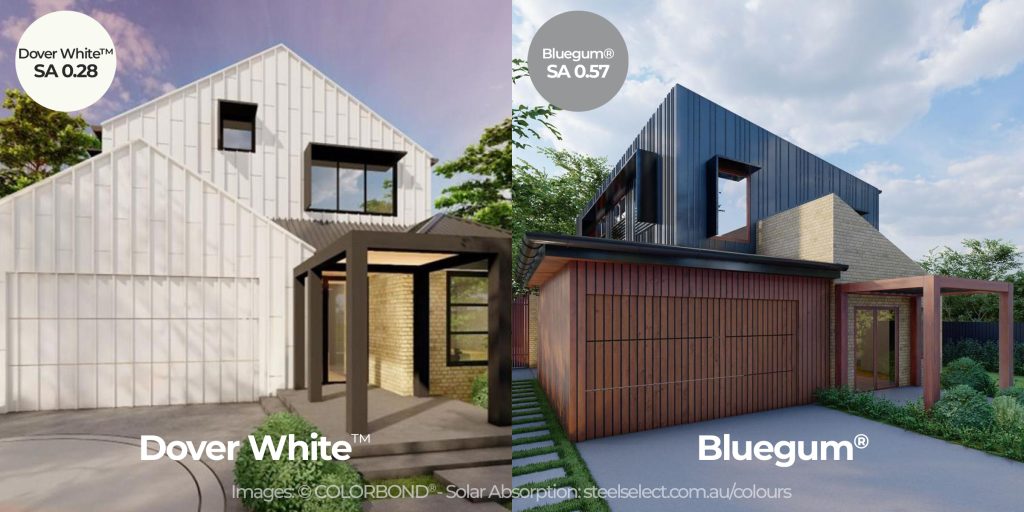
Dover White™ from COLORBOND® has a solar absorption rating of 0.28. Meaning it absorbs 28% of the solar heat. Bluegum® with a Matt finish has a solar absorption of 0.57 or 57% – ref Steel Select.
The sun’s maximum normal surface irradiance at approximately 1000 W/m2. Colour makes a big thermal difference. Super Therm® has a solar absorption of just 3.9%. Simple yet powerful thermal software formulas go a long way to helping Australia’s cool surface blindspot while reducing energy costs, reducing CO2 and creating genuine thermal comfort for users. Design Visualiser by COLORBOND® has the opportunity to help Australia in its race to Net Zero.
Super Therm® blocks 99.5% of the infrared and 96.1% total solar. The original Heat Neutralizer Ceramics Thermal Insulation Coating developed since 1989.
Super Therm® was assessed by the BOCA as an internal insulation coating. BOCA Building Code means the applicable Building Officials and Code Administrators National Building Code USA.
Evaluation Scope
Compliance with the following codes BOCA National Building Code/1999.
THERMAL INSULATING MATERIALS
Superior Products’ Super Therm® is a white, water-based coating consisting of a combination of acrylics, urethanes, additives and ceramic particles. Super Therm® is a surface-applied insulating coating for interior use in exposed and concealed spaces. The coating has a Class I interior finish classification. The coating is applied to a prepared substrate by means of an airless sprayer, roller or brush. When applied over porous substrates. the substrate shall be primed with a coating of Superior Products International II, Inc. Super Base, an elastomeric acrylic coating, prior to final application.
The BOCA National Codes set forth minimum performance requirements for all aspects of construction. They address the areas of building, fire prevention, mechanical systems, property maintenance and energy conservation.
- Section 723.2 Exposed installations
- Section 723.3 Concealed installations
INTERIOR FINISH
- Section 803.2 Classification
- 1098 International Mechanical Code
INSULATION
- Section 604.3 Coverings and linings
- The ASTM E84 is the standard test method for assessing the surface burning characteristics of building products to explore how the material might contribute to flame spread in the event of a fire. The test reports the Flame Spread index and Smoke Developed index of the tested product. Super Therm® is rated Class ‘A’ for Flame Spread Index of 25 or less, Smoke Developed Value of 450 or less. Fire testing results for SUPER THERM including NASA, AWTA, FM and ABS (Marine)
- VTEC Laboratories Inc., Report No. 500-108-1, dated July 17, 2000, containing results of testing performed in accordance with ASTM C411 (Standard Test Method for Hot-Surface Performance of High-Temperature Thermal Insulation).
- VTEC Laboratories Inc., Report No. 100-716-9, dated March 27, 1998, containing results of thermal conductivity testing performed in accordance with ASTM C177 (Standard Test Method for Steady-State Heat Flux Measurements and Thermal Transmission Properties by Means of the Guarded-Hot-Plate Apparatus).
- Manufacturer’s installation manual, titled Superior Products International Il, Inc. Application Training Manual, containing requirements for application of Super Therm® coating.
Apartment building thermal insulation protection
Super Therm® Architectural Specifications
Section One
Product Specifications:
These specifications are provided for convenience and are generic in nature.
1. General
1.1 Description
Ceramic coating applied to metal, concrete, wood or other substrates where a reduction in thermal transmission is required.
Surface coating applied to substrates in fabrication shop before shipment to site, or applied on site in an approved environment during application and curing.
1.2 Quality Assurance
1 Applicator should be certified by the coating manufacturer or distributor.
2 Finished system to conform to thermal ratings established by:
- ASTM E1269-01 ”Standard Test Method for Determining Specific Heat Capacity by Differential Scanning Calorimetry”
- ASTM E1461-01 ”Standard Test Method for Thermal Diffusivity of Solids by the Flash Method”
- ASTM C236-89 (1993) e1 ”Standard Test Method for Steady-State Thermal Performance of Building Assemblies by Means of a Guarded HotBox ” or equivalent.
3 Submit manufacturer’s certification that materials meet or exceed specified requirements.
1.3 Performance Requirements
1 Coating shall limit thermal transfer on all substrates
2 In addition the coating shall meet or exceed the requirements when tested in accordance with ASTM B117, C177, C411, D412, D522, D1653, D1654, D3273-82T, D3274, D4060, E84, E84-89, E96, E903-96, E1269, E1461(92), G53, or equivalents.
3 Coating should be International Codes Council approved.
4 Coating should be an approved Energy Star Partner.
5 Coating should qualify for LEED (Leadership in Energy and Environmental Design) points.
6 Coating should carry Factory Mutual approval ASTM E108
7 Coating may require USDA or CFIA approval or equivalent
8 Coating may require DNV (Det Norske Veritas) certification
9 Coating may require IMO (International Maritime Organization) certification
10 Coating may require MSC (Marine Safety Counsel) certification
11 Coating shall exhibit good exterior UV and weathering properties to a minimum of 10 years (Kansas field testing and Energy Star).
1.4 PRODUCT DATA
1 Submit data in accordance with Section Two which describes coating material, method of surface preparation, method of application, location of application, environmental condition requirements / limitations and on site touch up and protection.
1.5 Thermal Test Reports
1 Submit documented copies of thermal test reports from certified and independent thermal testing agencies.
2 Submit certified test reports of the following:
- Coating shall provide a significant reduction of at least 90% in BTU conduction on all substrates when tested in accordance with ASTM E1269-01 ”Standard Test Method for Determining Specific Heat Capacity by Differential Scanning Calorimetry”
- ASTM E1461-01 ”Standard Test Method for Thermal Diffusivity of Solids by the Flash Method” and \ or limit thermal transfer to a rating of 0.31 BTU per square foot / hour / °F or better when applied to the interior side of the substrate and limit thermal transfer to a rating of 0.21 BTU per square foot / hour / °F or better when applied to both sides of the substrate when tested in accordance with
- ASTM C236-89 (1993) e1 ”Standard Test Method for Steady-State Thermal Performance of Building Assemblies by Means of a Guarded Hot Box” or
- ASTM C1363 “Standard Method of Test for the Thermal Performance of Building Assemblies by Means of a Hot Box Apparatus”
1.6 Delivery, Storage and Handling
1 Deliver coating materials to place of application in original, unopened container, bearing name of manufacturer and product identification.
2 Store materials off ground, under cover and at a temperature above freezing.
3 Transport and handle any prior coated surfaces with due care to prevent damage.
Section Two
2. Products
2.1 Materials
- Super Therm® Ceramic Coating manufactured by Superior Products International II, Inc. and distributed by NEOtech Coatings Australia, meeting the requirements of Section One preceding.
- Super Therm® is a unique combination of high performance aliphatic urethanes, elastomeric acrylics, standard acrylics and resin additives in a water based formula.
- Super Therm® is designed with four separate ceramic compounds to heat from radiant heat, reflection, conduction and convection.
- Super Therm® ceramics are not the rough multifaceted type as the one found in other coatings, Super Therm® ceramics are ground to form microscopic spheres. The spherical shape permits the 4 types of ceramics to settle very tight together, not allowing air to interact between the ceramics; thus “plating”.
2.2 Certifications
Super Therm® meets the following ASTM certifications:
| B117 | 450 Hour Salt Spray ( Fog ) | Passed |
| C177 | Thermal Conductivity | Passed |
| C236-89 (93) | Thermal Transmittance \ Conductance | Passed |
| C411 | High Temperature Surface | Passed |
| D412 | Tensile Properties -.041 thickness = 13,248 psi | Passed |
| D522 | Mandrel Bend on metal or rubber materials -1″ (25mm) bend -1/4″ (6mm) bend | Passed |
| D1653 | Water Vapor Permeability | Passed |
| D3273-82T | Fungal Resistance | Passed |
| D3274 | Fungal Resistance | Passed |
| D4060 | Abrasion Resistance | Passed |
| E108 | Standard Test Method for Fire Tests of Roof Coverings | Passed |
| E84 | Flame Spread \ Smoke Developed -Class “A” rating (or Class”I” or Class “1”) | Passed |
| E84-89a | Flame Spread \ Smoke Developed -Flame Spread Index “0” -Smoke Developed “0” | Passed |
| E96 | Water Vapor Transmission | Passed |
| E903-96 | Reflectance | Passed |
| E1269 | Heat Capacity by Differential Scanning Calorimeter | Passed |
| E1461 (92) | Thermal Diffusivity \ Conductivity by Flash Method – Blocked 91% of Heat BTU Conduction | Passed |
| G53 | 1000 Hours UV Exposure | Passed |
Super Therm® has other Registrations and Certifications:
| Energy Star Program | Approved Partner |
| Approved and accepted as an energy partner for saving energy | |
| Passed ASTM E903-96 Reflectivity 80% | |
| Only 1% Reduction in Reflectivity over 3 years | |
| Only 3% Reduction in Reflectivity over 10 years | |
| This test is for Reflectivity only and does not include any insulation abilities | |
| ICC (International Code Council) | Approved |
| Formally consolidates approvals for: | |
| BOCA (Building Officials Code Administration) | |
| ICBO (International Conference of Building Officials) | |
| SBCCI (Southern Building Code Congress International) | |
| Division 07 Thermal and Moisture Protection | Section 07200 – Insulation: – Thermal Insulating Materials Section 723.2 Exposed installations – Thermal Insulating Materials Section 723.3 Concealed installations – Interior Finish Section 803.2 Classification – Insulation Section 604.3 Coverings and linings – 1998 International Mechanical Code | |
| Factory Mutual | Approved |
| – Tested and approved for Roofing and all other applications – Process of Listing | |
| USDA (United States Department of Agriculture) | Approved |
| – Letter of Authorization from USDA Product Safety Branch – Letter of Written Certification as Accepted by USDA from manufacturer | |
| CFIA (Canadian Food Inspection Agency) | Approved |
| – Accepted Construction Materials, Packaging Materials and Non-Food Chemical Products | |
| DNV ( Det Norske Veritas ) | Certified |
| – Passed DNV Audit and DNV Compliance – Approved for world-wide salt water and maritime use – Tested Low Flame Spread, no excessive smoke, nor toxic product | |
| IMO (International Maritime Organization) | Passed |
| – IMO A. 653 (16) Flame spread for bulkhead, wall and ceiling linings | |
| MSC (Marine Safety Counsel) | Passed |
| – MSC.41 (64) Toxic Gas generation using Colorimetric Gas Detector Tubes – Met all toxic gas requirements | |
| NASA (National Aeronautics and Space Administration) | Passed |
| – NASA 8060.1B/C, Test 1 Flammability Test “0” Flame Spread – NASA 8060.1C, Test 7 Toxic Off-gassing “K” Rating | |
| JIS (Japanese Institute of Standards) | Passed |
| – JIS A 5759 Reflectivity Light and Radiation – Light Reflectivity Ratio 92.2 – Long Wave Radiation ( Infrared ) 99.5 | |
| China Center for Technical Testing | |
| – GB/T 1771-91 – Resistance to Salt Fog (2000 hours) | Passed |
| – GB/T 1866-88 – Manual Aging (2000 hours) | Passed |
| – GB/T 10834-88 – Resistance to Salt Water (1000 hours) | Passed |
| – GB/T 5219-85 – Adhesion (pulling apart method) | 4.07Mpa |
| – GB/T 1733-93 – Boiling Water Immersion | 8 hours |
Section Three
3. Execution
3.1 Protection / Preparation of Substrate
1 Protect adjacent surfaces and equipment from damage by over-spray, fallout and dusting. Mask adjacent work as required.
2 Repair any damaged areas first by caulking, patching, sealing, grouting, welding, taping, priming, etc.
3 Clean substrate to remove dirt, dust, grease, oil, waxy substances, release agents, loose material such as flaking paint or rust or other matter which would affect bond of ceramic insulation coating. Surfaces must be clean, dry and sound before application. High-pressure water blasting with TSP is as effective as light sand blasting in removing loose or old flaking paints or corrosion. As a rule, “a coating is only as good as the surface it covers.” Old paints can remain if bonded solidly to surfaces.
3.2 Environment
1 Application temperatures range from a minimum of 10°C to a maximum of 65°C but the optimum application temperature is 22°C.
2 Never apply if it’s raining or there is a chance of rain the day of application. If applied when humidity is high or it rains constantly for 3-4 days after Super Therm® is applied you may notice some bubbling effects on the coating. DO NOT PUNCTURE these bubbles. This is normal as the formula is water based and is absorbing the moisture and, therefore forming bubbles. After the rain stops, the sun will dry out the coating and allow it to cure down naturally. As the sun draws out the moisture, the bubbles will settle down and allow the coating to adhere in its normal dry down without problem.
3.3 APPLICATION
1 Super Therm® can bond to metal, wood, masonry and other porous surface substrates, and can be best applied by airless or air pot sprayer, roller and by brush.
2 If rolling, it may take two coats to apply required mils. A 3/4-inch nap roller is best.
3 Spraying airless requires a .028 – .033 steel carbon tip. Remove all filters from spray equipment before using.
4 Do not apply very thick on a single coat. If thickness is desired, apply in multiple coats. A thick coat will allow the top-coating surface to dry before the bottom thus creating cracks in the coating.
3.4 Coverage
1 Super Therm® is applied at a rate of 95 square feet per gallon. This gives a mil thickness of 17 mils WFT that equals 10 mils DFT being 60% solids by volume.
2 On a horizontal substrate this is easily achieved in one coat using the cross hatch method of up and down and side to side.
3 On vertical substrates it is possible to apply 17 mils WFT in one coat but it’s easier and better to apply it in 2 coats of 8.5 mils WFT each. This prevents any possible sag by going a little too thick and allows you to cross hatch (side to side then up and down) to achieve a better seal.
3.5 Drying \ Curing Time and Recoat Windows
1 Super Therm® is a waterborne coating which contains no co-solvents and dries by evaporation.
2 Drying time is generally 1 hour to touch and 2 hours to recoat but these times will vary depending on relative humidity and ambient temperature. More dry time is required in a very cool or damp climate.
3 Super Therm® completely cures is 14 – 21 days again depending on relative humidity and ambient temperature.
4 Super Therm® contains 8% water. Water is a thermal conductor as opposed to a thermal resistor consequently the performance increases over time until all the water has evaporated out of the coating.
3.6 COLOURS
1 First and foremost colour of course has an effect on heat build up. The darker the colour the more heat it absorbs.
2 Unlike paint, which contains 25% – 50% water, Super Therm® only has 8% water for a high quality water based universal tint to work with. Consequently Super Therm® may be tinted to a light pastel or earth tone. The exception to this is GREY because the tint required is black which has a tendency to cover the ceramics and affect the performance. The least desirable colour is black providing heat conductance all the way through the coating.
3 If a dark colour is desired then the recommendation is to double the mils to 500 microns DFT and topcoat with the dark colour. At least this way the ceramics will throw the absorbed heat back into the topcoat.
4 Even with a pastel colour it’s better to topcoat but then you only need 250 microns DFT of Super Therm®




